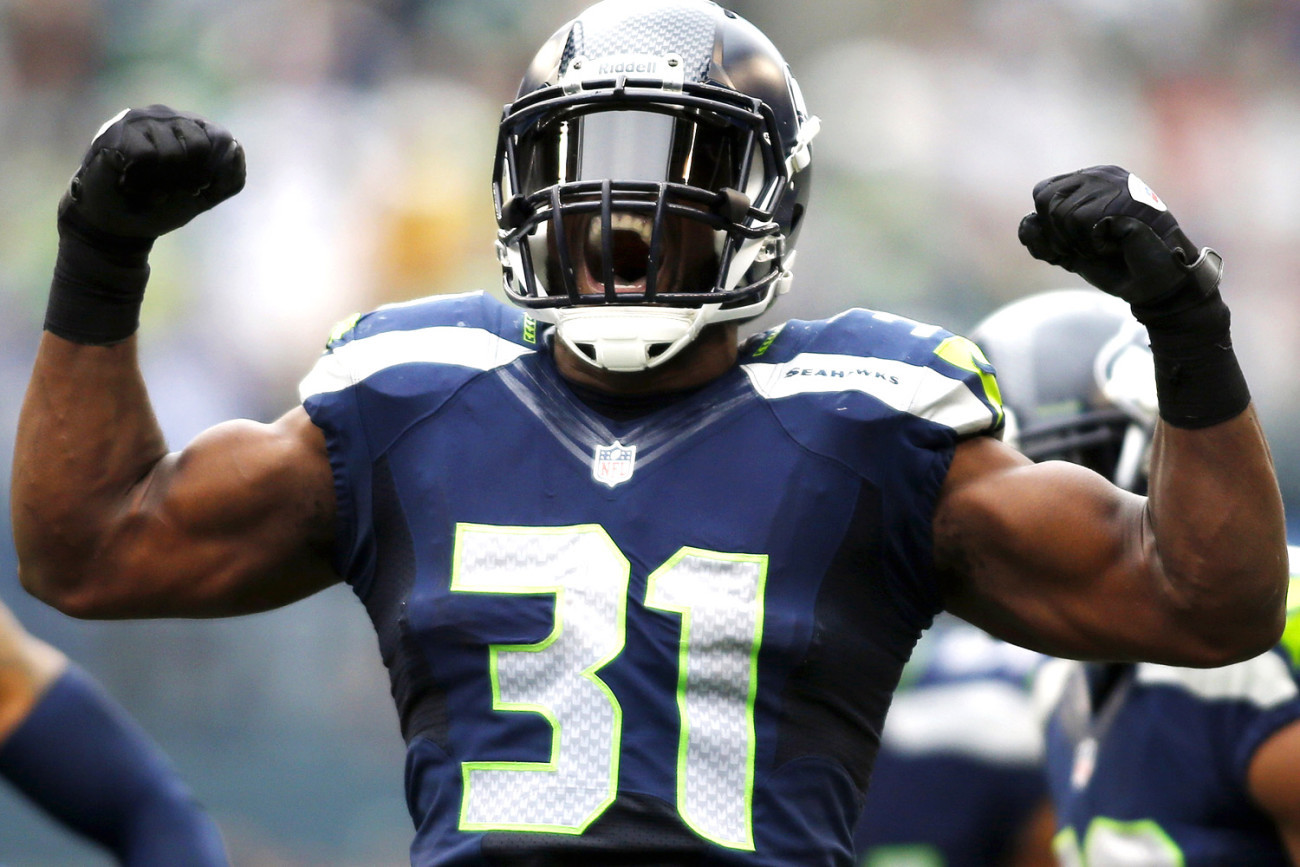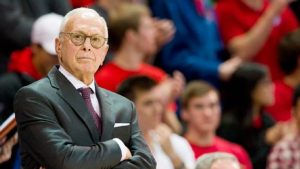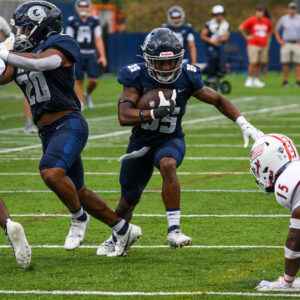Halftime Sports Editor Matt Jasko examines the intersection between finance, economics, and athletics in his segment, “The Cap.”
The Seattle Seahawks’ 27-year-old star superstar safety, “Bam Bam” Kam Chancellor, concluded his Emmet Smith-esque holdout earlier this week without gaining any adjustments to his current four-year (three remaining), 28 million dollar deal. Here is an objective look at the three-time Pro Bowler’s renegotiation attempt and why it ended futilely for him.
Firstly, to understand Chancellor’s actions we must understand why he felt he had leverage to hold out to begin with. There are three major changes which can lead a player to have leverage to alter an existing deal within the length of the contract: exceptional player development, pertinent changes to the team roster, and a rapidly changing market value at a player’s position. Looking at each of these categories individually will allow us to gauge how strong Chancellor’s leverage was to begin with and may help us understand why he failed.
The first possible leverage-increasing change is that of exceptional player development. In effect this refers to a player making dramatic improvements (and hence becoming more valuable) to a team during the length of a contract. If these improvements are dramatic enough it may compel the team to renegotiate salary when faced with the possibility of losing a player (as the Seahawks did for two weeks while Chancellor held out).
An objective, though albeit incomplete, way to gauge this improvement is to look at changes in statistical production. While other factors such as changing personnel, coaching, scheme, etc. can certainly create a significant discrepancy in this method, these factors have remained relatively similar in Seattle over the period in question between Chancellor signing his deal in 2013 and his most recent complete body of work in 2014. Hence, by comparing standard and sabermetric statistics between these two years, we can get a rough feel for changes in productivity. While this will certainly be an inexact measure in the change in productivity, it should be enough of a benchmark because a substantial increase would be necessary for a player to leverage a team into a new deal.
With this in mind, we begin by looking at Chancellor’s major statistical production in 2013. During this year he recorded 99 total tackles (65 solo), forced one fumble, and intercepted three passes. The critic of Chancellor will point out that year later, though playing through injury, his numbers diminished to 78 total tackles (60 solo), one forced fumble, and one interception.
However, despite the lack in raw statistical output, we must take note of two important factors: the fact that Chancellor was playing through injury, and the fact that these statistics are incomplete. The effect of injury is plain to see; however the major factor of incomplete statistical information often gets lost in translation.
The fact is that a large part of the reason why Chancellor recorded fewer quantities of total raw statics is because he allowed so few catches. Take for example the six-week stretch between Week 11 and Week 16 of 2014 when he allowed only four catches for a total of 18 yards. This important analysis is often left out of major statistics and accounts for why a player like Deon Sanders appears to have relatively unimpressive numbers at first glance, when in reality he was one of the most (very likely the most) impactful secondary player of all time.
Chancellor’s numbers are highly impressive; however, the Seattle safety had set a high bar for himself prior to the contract negotiations. The initial figures of his deal may slightly understate the safety’s value, but what Chancellor likely believed increased his leverage to the point of a holdout was likely not as much his bump in production from very good to very, very good, but rather it was probably a change in the roster around him.
This is where the second point comes in– if there are major personnel changes on a team, a player’s relative value changes. In Seattle, a low-profile roster change caused what Chancellor believed could be a profound consequence—the departure of Jeron Johnson. Though the back-up safety did not put up massive numbers, he was an effective and experienced option to hold down the fort for an interim time period. In contrast, the remaining Seattle backup, DeShawn Shead, had extremely limited experience entering the 2015 season.
This large prospect of the unknown ability of Shead to fill in could have frightened Seattle into conceding money to get one of their stars back, something Chancellor was likely banking on. However, this didn’t happen. Instead, the Seahawks made it work, plugging Shead in everywhere from safety, to nickel, to corner.
And the third condition—a dramatic increase in the market value at a position—did not occur either. This would have required something extreme such as a rule change making coverage even more difficult, or a plague hitting all the other top-10 safeties in the league, but no such happenings occurred. Chancellor’s average yearly salary of just over $7 million ranks eighth among all safeties, a sensible number particularly considering he has the benefit of playing along-side the highest-paid and arguably best safety in the league, Earl Thomas.
Early on in the lockout, these factors seemed to indicate Chancellor may have some leverage. However, with Seattle proving they were not afraid to go to their backup and Chancellor enduring a hemorrhaging rate of roughly$270K/ week (plus the increasing disdain of teammates, coaching staff, front office, and fans) accumulating in addition to the $2.7 million he had already lost, the safety was forced to make a decision—continue hemorrhaging or concede his losses and return to the field.
Though many believed an 0-2 Seattle start may have forced the team to give up more money, the front office remained resolute and set an important precedent— players cannot hold out during the regular season and expect to win. Renegotiating with Chancellor would have saved a game or two today, but very well could have induced many more costly holdouts in the future.
With three years still remaining on Chancellor’s contract, the front office knew the players, coaches, media, and public would side with them over the player who inked a $28 million deal only a year ago. In effect, this is why Seattle won—they demonstrated they were not afraid to use a backup player when they believed their star would break his holdout to preserve face on the only team he has ever played for.
What the organization understood was the fact that though Chancellor is important to them, the organization is even more important to him. Without it, he doesn’t get paid, loved, or admired; instead he comes off as a greedy millionaire who ironically pinned himself in a position in which he cannot leave Seattle for three more years. While that decision did offer him great stability and a guaranteed paycheck, it sapped him of much renegotiation leverage.
With no real option to skip town in the near future and the Seahawks having proven how important a precedent it was for them to set, the safety had no choice but to return to the field with no new deal.





